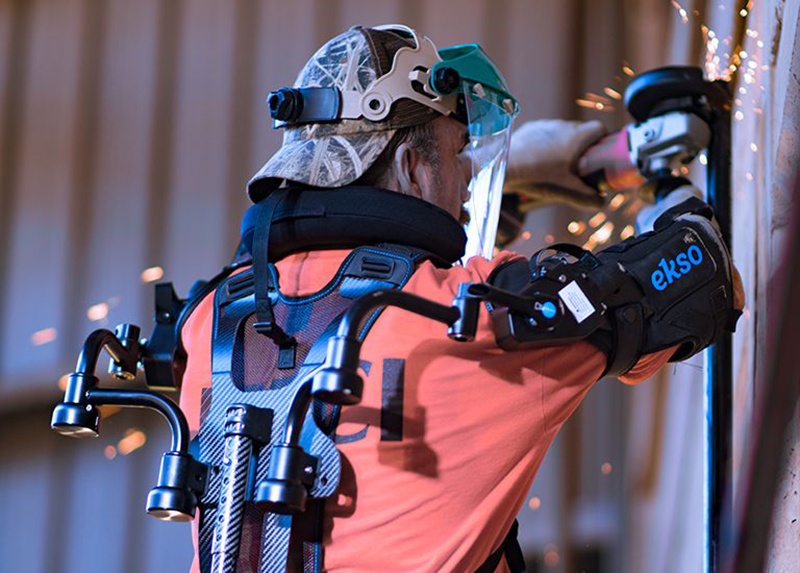Technology is continuing to make revolutionary strides in construction and manufacturing industries. Leading this charge are exoskeletons, also known as exosuits. While majority of today’s $130 million wearable robotics market is for medical exoskeletons, these wearable machines are slowly making their way into the construction industry to increase safety and productivity for all workers. Industrial exoskeletons are growing in number, as is the number of providers, reported Wintergreen Research Inc.
Exoskeletons are a form of wearable technology that helps lessen worker strain from repetitive tasks that are common in manufacturing and construction.
Read more Yamaha Motors Invests in Wearable Robotic Exoskeletons for Skiers
Exoskeletons in Production
Last year, Ford and Hyundai Motor deployed industrial exoskeletons in its North American plants.
The vest used by Ford is called the EskoVest, an exoskeleton designed by Ekso Bionics. It fits workers ranging from 5 feet 2 inches tall to 6 feet 4 inches tall and provides lift assistance from five pounds to 15 pounds per arm. It is unpowered and uses spring assistance to provide between 5 and 15 lb (2.2 and 6.8 kg) of lift support per arm. Ford workers said it’s comfortable because it’s lightweight and not bulky, allowing them to move their arms easily.

Since September, 2018, Hyundai has been testing the Hyundai Chairless Exoskeleton (H-CEX) at a factory in North America. The H-CEX is aimed workers who have to stay in a seated position throughout the day. The carmaker said, by the end of this year, it’ll introduce the Hyundai Vest Exoskeleton (H-VEX) at the same facility. The H-CEX, the company’s first industrial wearable robot, weighs 1.6 kg but is endurable enough to buttress a body weight of up to 150kg. The H-CEX decreases the use of waist and lower body muscles by 80%, reducing the fatigue that results from being in the same seated position for an extended period of time, the carmaker said in statement.
Exoskeletons in Construction
Construction work involves various tasks that can potentially lead to injury. In fact, everyday activities such as lifting and carrying heavy objects are the leading cause of injuries in construction.
Read more Fraunhofer’s Soft Robotic Wearable System Protects Workers from Back Injury
Consigli Construction, outside of Boston, is one of many firms employing exoskeletons. These suits will take weight off workers in the field, which will increase their safety and enable them to do a better job because they will experience less muscle fatigue, according to the company, Jack Moran, BIM services manager at Consigli, told Construction Dive.
Willmott Dixon, one of UK’s largest contractors, has been trialing exoskeletons on a number of building sites across the country, reports Peter Smisek at The B1M. The company partnered up with robotics firm Ekso Bionics and started trialing the “Eksovest” – an upper-body exoskeleton that supports arms during lifting – at the Cardiff West Community High School in Wales.












